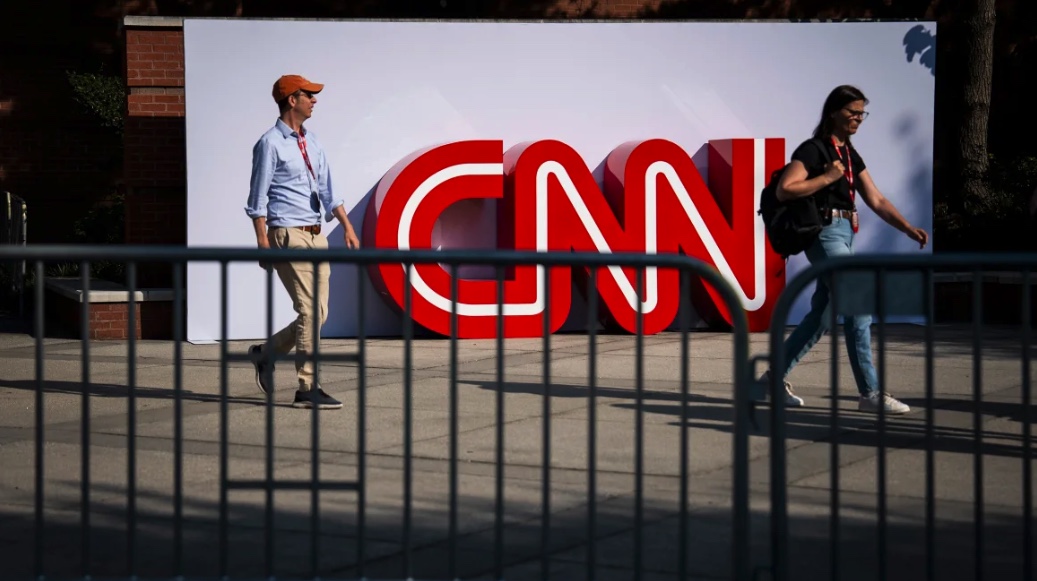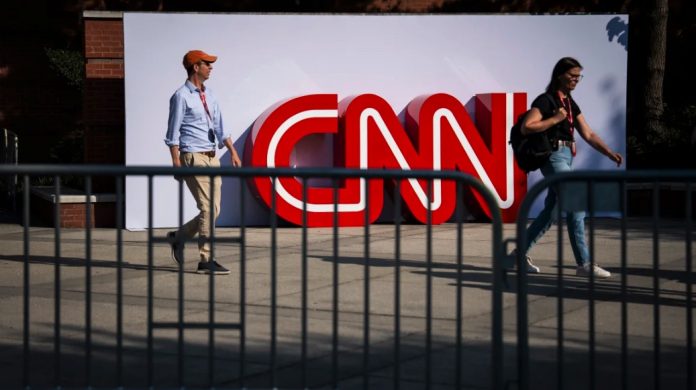CNN ซึ่งเป็นหนึ่งในเว็บไซต์ข่าวที่ได้รับความนิยมมากที่สุดในโลก เริ่มขอให้ผู้ใช้งานบางส่วนจ่ายเงิน 3.99 ดอลลาร์สหรัฐต่อเดือนเพื่อเข้าถึงเนื้อหา
ในวันอังคาร องค์กรข่าวได้เริ่มต้นการติดตั้งระบบที่เรียกว่า “เพย์วอลล์” เพื่อช่วยสนับสนุนค่าใช้จ่ายในการทำข่าวของ CNN ทั่วโลกในอนาคต
“เริ่มตั้งแต่วันนี้ เราขอให้ผู้ใช้ในสหรัฐฯ จ่ายค่าธรรมเนียมรายเดือนเล็กน้อยสำหรับการเข้าถึงบทความคุณภาพระดับโลกของ CNN.com ได้ไม่จำกัด” Alex MacCallum รองประธานบริหารฝ่ายผลิตภัณฑ์และบริการดิจิทัลของ CNN เขียนในบันทึกภายในซึ่งอธิบายแผนการนี้
ผู้เข้าชมเว็บไซต์ CNN ทั่วไปที่อ่านเพียงไม่กี่บทความต่อเดือน จะยังไม่ถูกขอให้จ่ายเงินในขณะนี้ “จะมีการขอให้ผู้ใช้สมัครสมาชิกหลังจากที่พวกเขาอ่านบทความฟรีจำนวนหนึ่งแล้ว” MacCallum อธิบาย “นอกจากจะเข้าถึงบทความบน CNN.com ได้ไม่จำกัดแล้ว ผู้สมัครสมาชิกจะได้รับสิทธิประโยชน์ เช่น คุณสมบัติเฉพาะทางการเลือกตั้ง สารคดีต้นฉบับ และการคัดสรรเนื้อหาการรายงานข่าวที่โดดเด่นที่สุดของเราในแต่ละวัน พร้อมทั้งการเห็นโฆษณาน้อยลง”
MacCallum และหัวหน้าของเธอ Mark Thompson ประธานและประธานเจ้าหน้าที่บริหารของ CNN เคยทำงานที่ The New York Times ซึ่งเป็นสื่อที่ได้รับความชื่นชมอย่างกว้างขวางในวงการข่าวสำหรับความสำเร็จในการเปลี่ยนผู้อ่านออนไลน์และผู้เล่นเกมเป็นสมาชิกที่จ่ายเงิน
ในบันทึกช่วงฤดูร้อนที่ผ่านมา Thompson กล่าวว่าทาง CNN จะ “สร้างผลิตภัณฑ์แบบสมัครสมาชิกที่ดีที่สุด ซึ่งจะให้ข้อมูลข่าวสารที่จำเป็นในการรู้ การวิเคราะห์ และบริบทในรูปแบบและประสบการณ์ใหม่ ๆ ที่น่าดึงดูด โดยเริ่มต้นด้วยผลิตภัณฑ์การสมัครสมาชิก CNN.com ซึ่งจะเปิดตัวก่อนสิ้นปี 2024″
บริการที่ต้องชำระเงินนี้คือสิ่งที่เปิดตัวในวันอังคารในรูปแบบเบื้องต้น ซึ่งจะขยายขอบเขตออกไปในเดือนต่อ ๆ ไป “ในระยะยาว เราจะลงทุนในการตอบสนองต่อความต้องการของผู้ใช้ให้ดียิ่งขึ้น และขยายแนวทางของเราเพื่อตอบสนองและให้บริการผู้ชมใหม่ ๆ” MacCallum เขียนในวันอังคาร โดยเป็นนัยถึง “ผลิตภัณฑ์และธุรกิจใหม่ ๆ” ในอนาคต
สำหรับแบรนด์อย่าง CNN ที่สร้างรายได้ส่วนใหญ่จากโทรทัศน์แบบเคเบิล ความท้าทายนั้นชัดเจน: ต้องพัฒนารายได้ดิจิทัลใหม่เพื่อชดเชยการลดลงของรายได้จากโทรทัศน์แบบเดิม
ภายใต้การบริหารชุดก่อน CNN ได้พัฒนาผลิตภัณฑ์วิดีโอสตรีมมิ่งที่เรียกว่า CNN+ ในปี 2022 เพื่อสร้างความสัมพันธ์โดยตรงกับผู้บริโภคที่ชื่นชอบเครือข่ายนี้ อย่างไรก็ตาม ผลิตภัณฑ์ดังกล่าวที่เปิดตัวเพียงไม่กี่วันก่อนที่จะมีผู้ปกครององค์กรใหม่อย่าง Warner Bros. Discovery เข้ามาบริหารและมองหาวิธีการประหยัดค่าใช้จ่ายนั้นกลับถูกยกเลิกภายในเวลาไม่กี่สัปดาห์
ปัจจุบัน CNN ตั้งใจที่จะสร้างรายได้จากการสมัครสมาชิกผ่านข้อเสนอหลักของบริษัท อย่างไรก็ตาม ยังมีบางเนื้อหาที่ยังคงเปิดให้เข้าถึงได้โดยไม่ต้องสมัครสมาชิก เช่น หน้าโฮมเพจของ CNN ข่าวด่วนที่ถ่ายทอดสด หน้าวิดีโอเดี่ยว และบทความที่ได้รับการสนับสนุน
Thomson Reuters ผู้ให้บริการข่าวมัลติมีเดียระหว่างประเทศรายใหญ่ที่สุดของโลกก็ประกาศเมื่อวันอังคารเช่นกันว่าจะเปิดตัวเพย์วอลล์สำหรับเว็บไซต์และแอปพลิเคชันในต้นเดือนตุลาคม สำนักข่าวแจ้งว่าสมาชิกสามารถสมัครได้ทั่วโลกในราคา 1 ดอลลาร์สหรัฐต่อสัปดาห์
“แผนการสมัครสมาชิกใหม่นี้ช่วยให้ Reuters สามารถขยายการเข้าถึงข่าวสารที่ได้รับรางวัลในราคาที่เข้าถึงได้ง่าย ในขณะเดียวกันก็ช่วยให้เราลงทุนเพิ่มเติมในการรายงานข่าวและผลิตภัณฑ์สำหรับสมาชิก” Paul Bascobert ประธานของ Reuters กล่าวในแถลงการณ์
การสมัครสมาชิกดิจิทัลเป็นธุรกิจที่มีศักยภาพแต่ท้าทายสำหรับองค์กรข่าวอื่นๆ จากการสำรวจล่าสุดโดยสถาบัน Reuters Institute for the Study of Journalism แห่งมหาวิทยาลัยอ็อกซ์ฟอร์ด พบว่ามีเพียงประมาณหนึ่งในห้าของผู้บริโภคชาวอเมริกันเท่านั้นที่ชำระเงินเพื่ออ่านข่าวออนไลน์ในปัจจุบัน
Greg Piechota นักวิจัยประจำสมาคมสื่อข่าวนานาชาติกล่าวว่ายังมีโอกาสสำหรับการเติบโตในอุตสาหกรรมนี้ “ยังไม่มีเพดานสำหรับการสมัครสมาชิกข่าวออนไลน์” Piechota กล่าว “ลองจินตนาการว่าคุณกำลังยืนอยู่หน้าตึก One World Trade ในใจกลางเมืองนิวยอร์ก และมองขึ้นไปยังชั้นชมวิวด้านบน แบรนด์ข่าวส่วนใหญ่เพิ่งจะขึ้นไปถึงชั้นแรก และชั้นที่ 100 ยังอยู่ไกลออกไปบนท้องฟ้า”
เขากล่าวว่า The Times อยู่สูงที่สุดโดยมีสมาชิกดิจิทัลประมาณ 10 ล้านคน
องค์กรข่าวขนาดเล็กหลายแห่งพบกับความเหนื่อยหน่ายในการสมัครสมาชิกและปัจจัยอื่นๆ ที่ขัดขวาง ซึ่งสะท้อนถึงความจริงที่ว่าเกือบทุกการรายงานข่าวถูกเผยแพร่ฟรีเมื่อเว็บไซต์เริ่มเป็นที่นิยมในช่วงปี 1990
บริษัทสื่อทั้งใหญ่และเล็กต่างพยายามใช้เวลาราวสิบปีที่ผ่านมาในการเปลี่ยนบรรทัดฐานเกี่ยวกับการเข้าถึงข่าวสาร
อย่างไรก็ตาม ผู้อ่านและผู้ชมจำนวนมากยังไม่เชื่อมโยงการชำระเงินเพื่อเข้าถึงข่าวสารเข้ากับการสนับสนุนอุตสาหกรรมนี้โดยรวม Piechota กล่าว “น่าเสียดายที่จากการสำรวจพบว่า ผู้บริโภคส่วนใหญ่ทั่วโลกไม่ตระหนักถึงความท้าทายทางการเงินที่สื่อข่าวเชิงพาณิชย์กำลังเผชิญ”
“แต่เมื่อพวกเขาได้ยินเกี่ยวกับสถานการณ์ทางการเงินที่วิกฤติของอุตสาหกรรมนี้” เขากล่าว “ความเต็มใจในการจ่ายเงินเพื่อสนับสนุนงานข่าวก็สูงที่สุด ตามที่ผลการศึกษาได้แสดงให้เห็น”
CNN launches a digital paywall, charging some users to read articles for the first time

CNN, one of the most popular news websites in the world, is starting to ask some of its visitors to pay $3.99 a month for access.
On Tuesday, the news organization is laying the first bricks in a so-called paywall that should, over time, help foot the bill for CNN’s journalism around the world.
“Starting today, we are asking users in the United States to pay a small recurring fee for unlimited access to CNN.com’s world-class articles,” Alex MacCallum, CNN’s executive vice president of digital products and services, wrote in an internal memo outlining the plan.
The average visitor to CNN’s website, who may only read a few articles a month, will not be prompted to pay at this time. “Only after users consume a certain number of free articles will they be prompted to subscribe,” MacCallum explained. “In addition to unlimited access to CNN.com’s articles, subscribers will receive benefits like exclusive election features, original documentaries, a curated daily selection of our most distinctive journalism, and fewer digital ads.”
MacCallum and her boss Mark Thompson, the chairman and chief executive of CNN, are both veterans of The New York Times, which is widely envied in the news business for its success in converting online readers and gamers into paying subscribers.
In a memo over the summer, Thompson said CNN would “create best-in-class, subscription-ready products that will provide need-to-know news, analysis and context in compelling new formats and experiences, starting with CNN.com’s first subscription product launching before the end of 2024.”
That paid offering is what’s launching on Tuesday – in a preliminary form that will expand in the months ahead. “Over time, we will invest in ways to better meet our users’ needs and expand our aperture to engage and serve new audiences,” MacCallum wrote Tuesday, hinting at “new products and businesses” in the future.
For brands like CNN that make most of their money from cable television, the challenge is clear: to develop new digital revenue streams that can offset declines in legacy TV.
Under previous management, CNN developed a streaming video product called CNN+ in 2022 to create direct-to-consumer relationships with fans of the network. That product, launching just days before a new corporate parent, Warner Bros. Discovery, took control and looked for cost savings, was doomed, however. CNN+ was cancelled within a matter of weeks.
CNN now intends to generate subscriptions with its core offerings. Some content, though, will remain fully accessible without a subscription, including the CNN homepage; breaking news live stories; standalone video pages; and sponsored articles.
Thomson Reuters, the world’s largest international multimedia news provider, on Tuesday announced that it will also launch a paywall for its website and app in early October. The news outlet shared that subscriptions will be available worldwide for a $1 weekly fee.
“This new subscription plan ensures Reuters can expand the reach of its award-winning coverage at an affordable price, while allowing us to further invest in our reporting and products for subscribers,” Reuters President Paul Bascobert said in a statement.
Digital subscriptions have been a promising but challenging business for other news organizations. A recent survey by the Reuters Institute for the Study of Journalism at the University of Oxford found that only about one in five American consumers are currently paying for online news.
Greg Piechota, a researcher-in-residence at the International News Media Association, said there is ample room for the industry to grow. “There is no subscription ceiling for online news,” Piechota said. “Imagine that you are standing in front of the One World Trade skyscraper in downtown New York, and looking up to the top observation deck. Most news brands have reached only the first floor, and the 100th floor is far away up in the clouds.”
The Times is the highest by far, he said, with roughly 10 million digital subscribers.
Smaller news organizations have run up against subscription fatigue and other sources of resistance – a reflection of the fact that virtually all news coverage was published for free when the World Wide Web was popularized in the 1990s.
Media companies large and small have spent the past decade or so trying to change the norms around access to news.
Still, many readers and viewers don’t connect the dots between personally paying for news and helping to sustain the industry as a whole. Piechota said “unfortunately, based on surveys, most consumers across the world are not aware of the financial challenges faced by the commercial news media.”
“But when they hear about the industry’s critical financial situation,” he said, “their willingness to pay for journalism is the highest, studies showed.”
By Brian Stelter, CNN

















